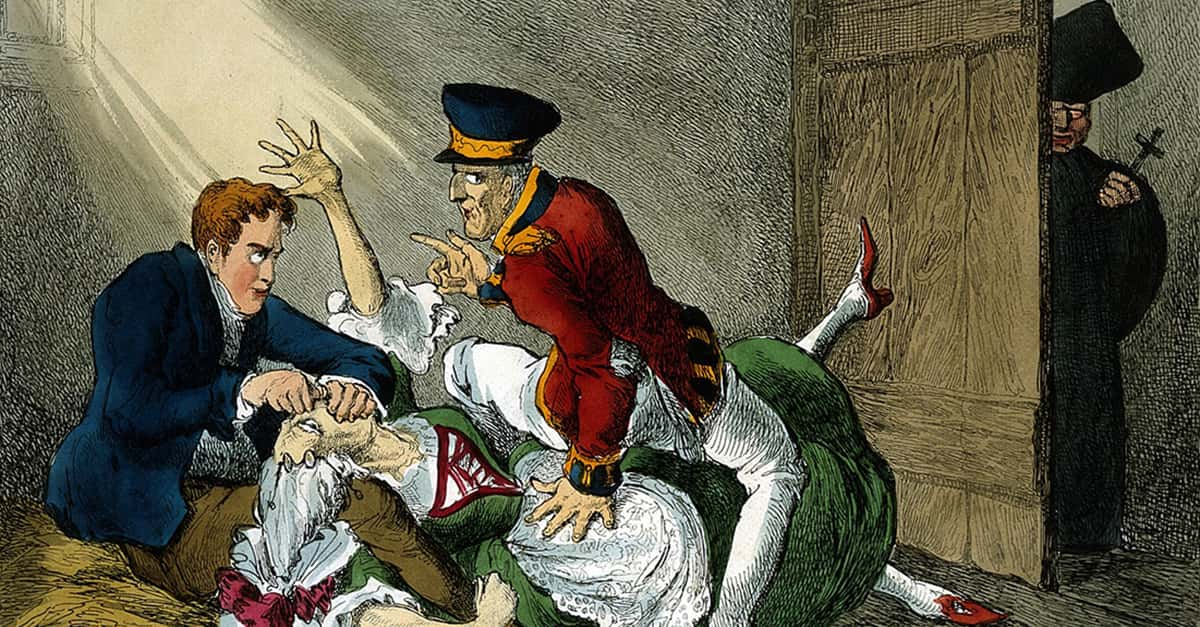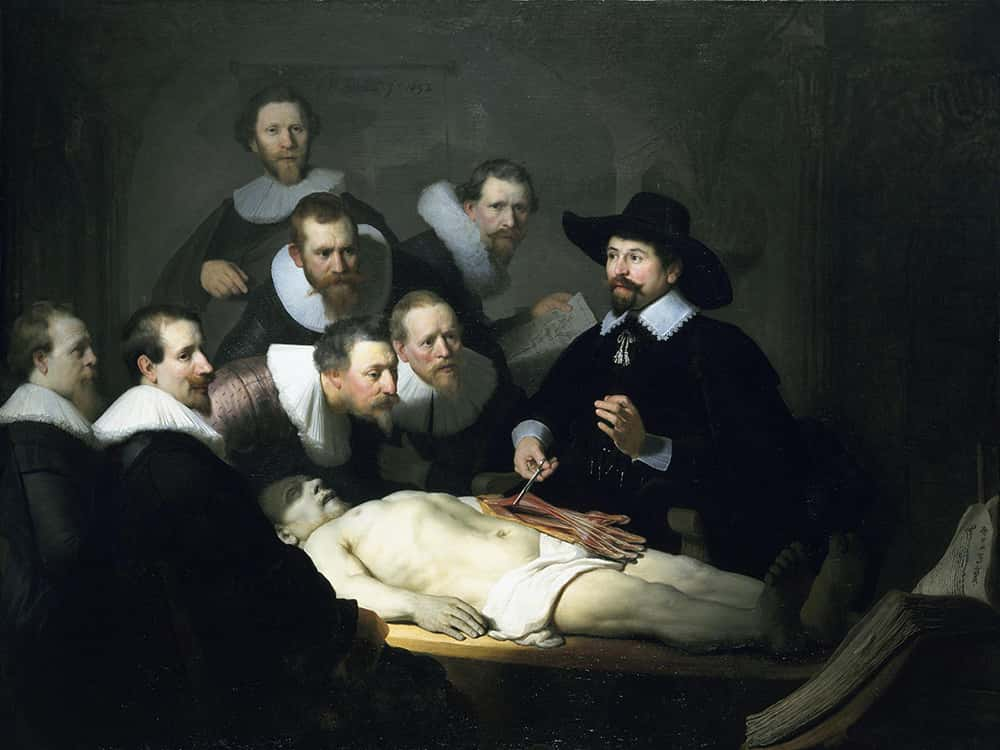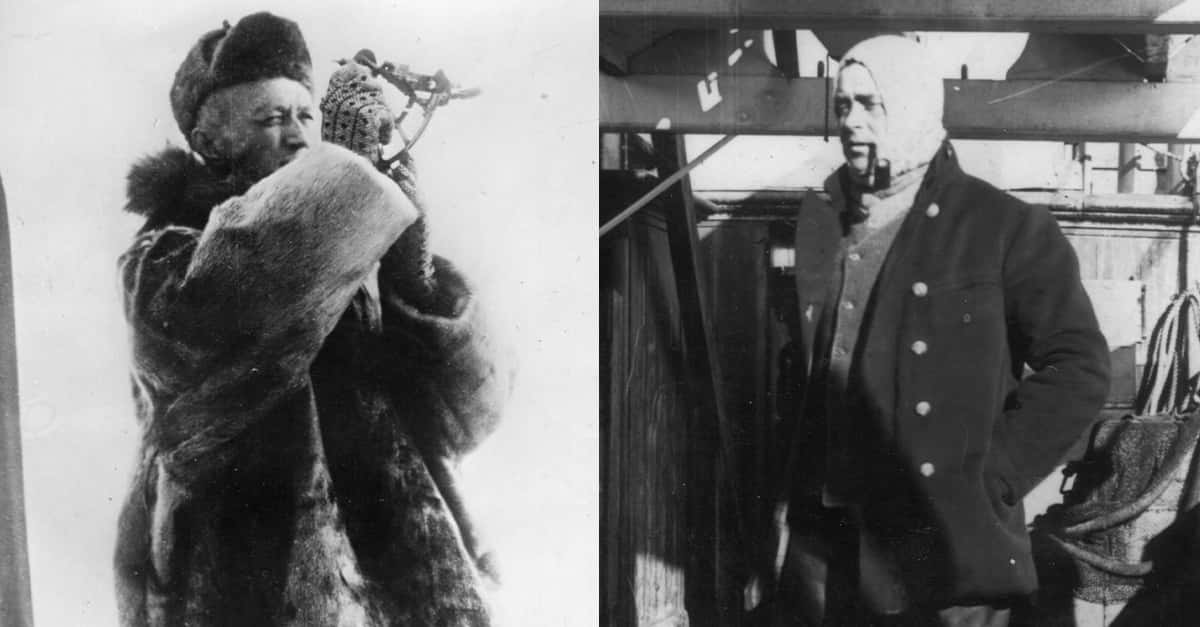A skeleton sits in Edinburgh Medical School’s Anatomical Museum. That’s not particularly interesting in and of itself. I would hope that most anatomical museums would have at least one or two skeletons. But this skeleton is special. It belonged to a man named William Burke. He was a murderer who killed at least 16 people. When he killed each of them, he brought them to the university where his bones now rest and sold them to a respected professor. Burke's bones became part of the collection that he began.
We can thank the Edinburgh Medical School for a lot of what we know about the human body today—but that knowledge came at a terrible price.
My Body is a Temple
Even after the Age of Enlightenment, Western culture knew shockingly little about how the human body worked. There was one very important reason for this: To learn about the human body, you had to dissect them, and that was a big no-no.
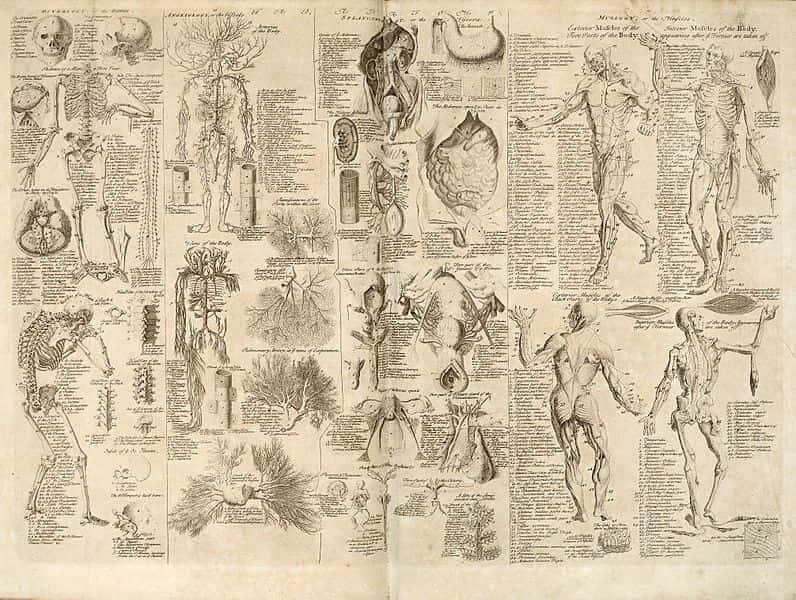 Wikimedia Commons Anatomical chart from 1728
Wikimedia Commons Anatomical chart from 1728
Most societies believed that to die and have your body carved up by a scientist was a horrific fate. Such a barbaric humiliation was unimaginable. Because of this taboo, dissecting a human body was outright banned in many countries. But, in the 18th century, scientists started itching to open some ribcages and see what makes us tick.
Eventually, scientific pressure led the British Government to allow the dissection of some cadavers. They deemed that criminals, suicide victims, and the bodies of orphans were A-OK. Anatomists found themselves as beggars, not choosers, and they set to work dissecting as many of these marginalized cadavers as they could.
Supply and Demand
These anatomists, like the ones working at Edinburgh Medical School, quickly found that their ambition far outweighed their supply. Unfortunately, there just weren’t enough suicides and starving orphans for their work.
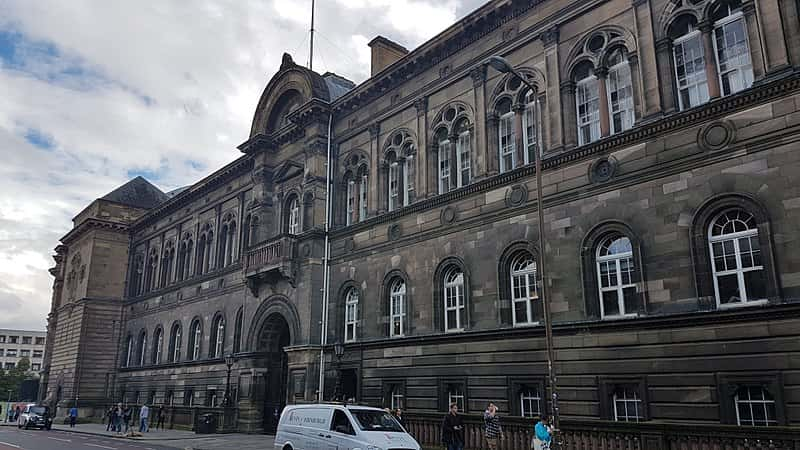 Wikimedia Commons Edinburgh Medical School
Wikimedia Commons Edinburgh Medical School
No doubt, anatomists of this era believed their studies of the human body were for the benefit of mankind. They also thought the laws limiting them were stupid. I can't say they were wrong on either of those counts. At the same time, what these scalpel-happy scientists did about it wasn't that great either.
Not about to let a silly law stop their altruistic work, 19th-century anatomists generally wouldn’t ask too many questions whenever someone brought them a cadaver. This 30-year-old man with a beard was an orphan? Good enough for me.
Bodies for Sale
Edinburgh was the epicenter of the study of anatomy in the 19th century. It was home to many pioneers in the field...who would take just about any cadaver someone brought them. As such, grave robbing became a huge problem in the city’s cemeteries. Those who took to this new line of work became known as “Resurrection Men,” and a gruesome black market sprang up around Edinburgh Medical School.
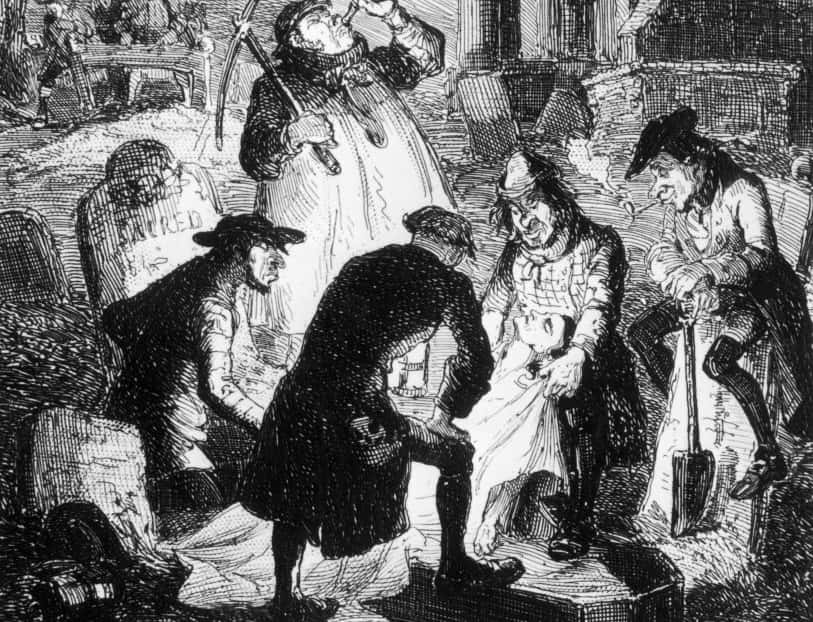 Getty Images 'Resurrectionists', or grave robbers, stealing a corpse from a cemetery to be sold for anatomical study and dissection, circa 1840.
Getty Images 'Resurrectionists', or grave robbers, stealing a corpse from a cemetery to be sold for anatomical study and dissection, circa 1840.
Wealthier people started hiring guards to watch over their loved ones’ graves, or maybe they’d pay for a giant stone slab to protect their plots. Mortsafes, large metal cages that could be locked around a coffin, became common. By the time the 1820s rolled around, citizens had started protesting in the streets. The mobs demanded a stop to the grave robbing problem.
Eventually, the body-snatching slowed down—but this only made the anatomists even more desperate for cadavers. And as they became more desperate, they became even less scrupulous.
A Real Cut-Up
Robert Knox was one of Edinburgh Medical School’s most prolific dissectors. At one point, he was performing two dissections every single day. At least according to him, students would flock to his lectures for unrivaled access to the inner workings of the human body.
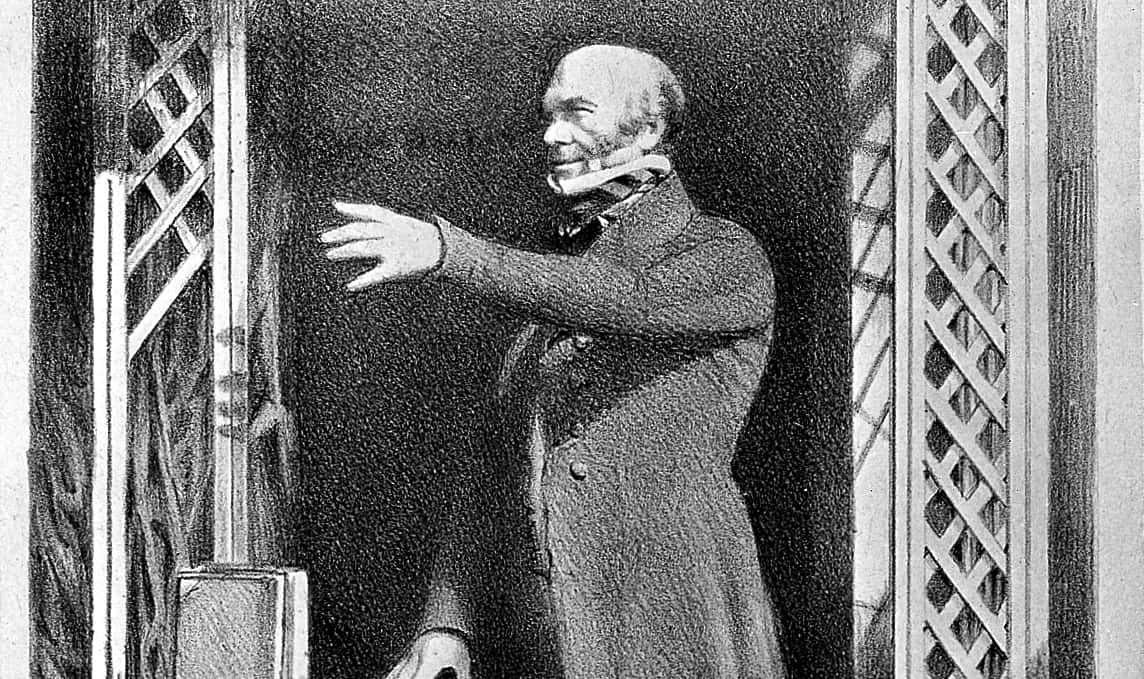 Wikimedia Commons Lithograph of Dr. Robert Knox
Wikimedia Commons Lithograph of Dr. Robert Knox
Today, historians admit that Knox played an important role in the history of anatomical study—but that’s not what most people remember him for. He, undoubtedly like many of his colleagues, asked few questions when someone brought him a corpse. So when William Burke and William Hare starting bringing him bodies, his only question was: “Do you have any more?”
Burke and Hare
In 1827, William Hare owned a shoddy Edinburgh lodging house. One day, one of his lodgers, a man named Donald, suddenly passed on from an illness while staying in the house. Hare was distraught—after all, dead men couldn’t pay rent. He complained about the loss of income to his friend William Burke, and the two came up with an idea. Why let a good corpse go to waste?
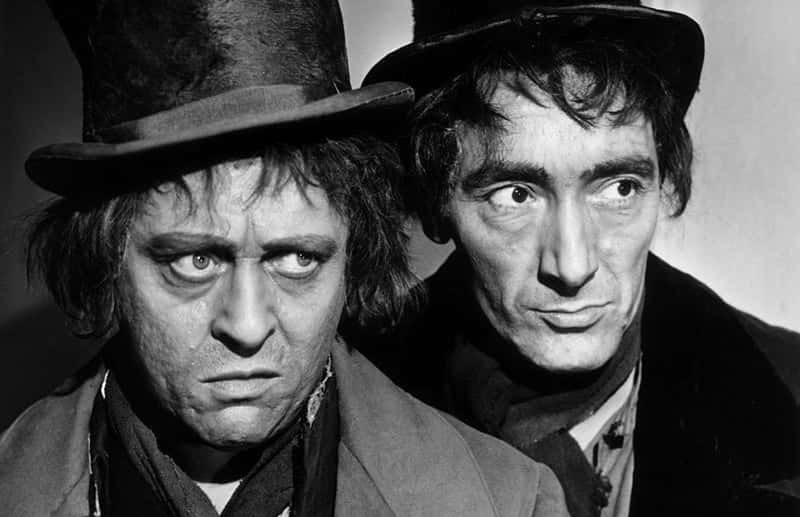 Getty Images Actors playing Burke & Hare in the play "The Anatomist"
Getty Images Actors playing Burke & Hare in the play "The Anatomist"
After Donald was placed in his coffin, the pair secretly removed his body, then resealed it. Then, they lugged the corpse across town to the Medical School, where they simply wandered around, looking for a professor who would buy it. They didn’t have to look very hard.
Burke and Hare eventually found themselves in front of the esteemed Robert Knox, who offered them £7 10s for the little “orphan” Donald. That might not sound like a lot, but that was an incredible payday for men like Burke and Hare. I’m sure they went home and drank themselves silly in celebration for their genius, victimless crime.
But of course, their transgressions wouldn’t stay victimless for long.
We All Saw Where This Was Going
It took Burke and Hare about a month before they made the next logical step: why should they have to wait for someone to die on their own? Between January and November 1828, the pair killed 16 people, mostly lodgers in Hare’s house.
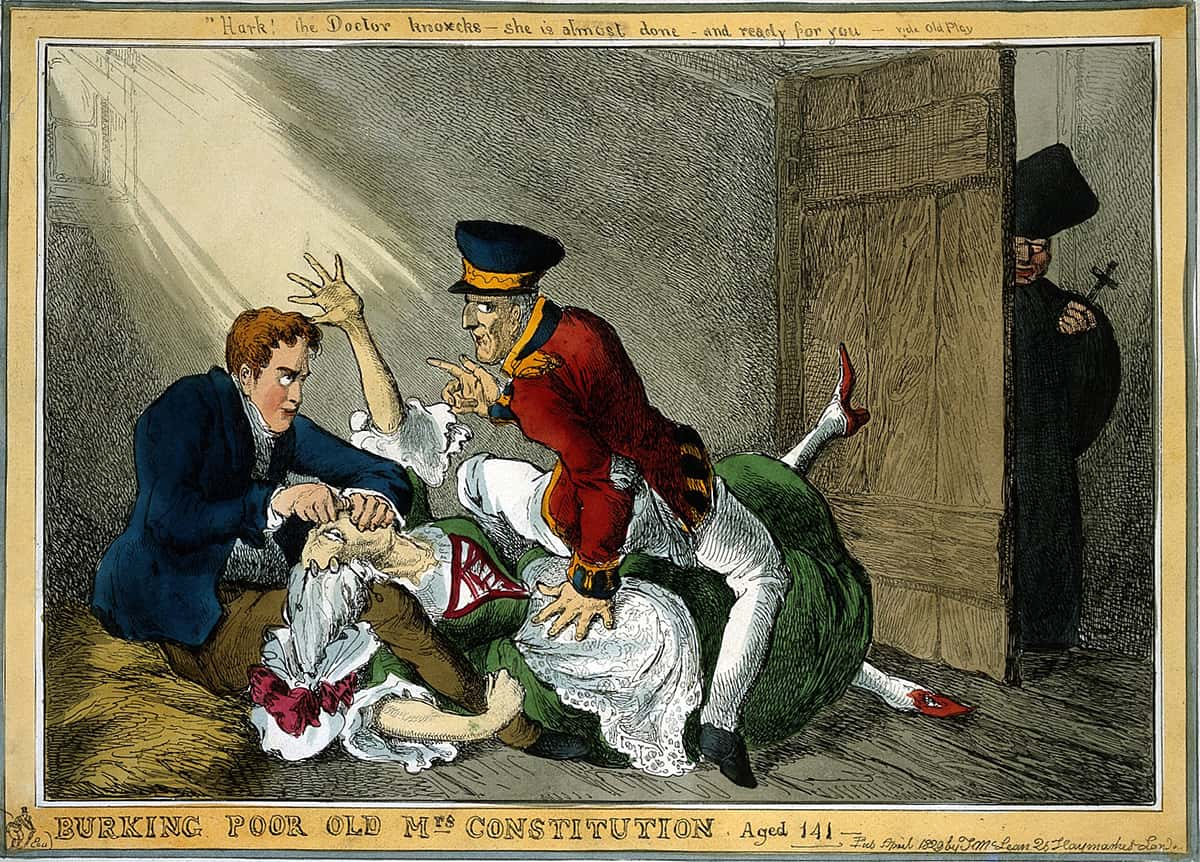 Wikimedia Commons Burke and Hare suffocating Mrs Docherty for sale to Dr. Knox
Wikimedia Commons Burke and Hare suffocating Mrs Docherty for sale to Dr. Knox
They took all of their victims straight to Knox, who was now paying them £10 a pop. Knox allegedly complimented them on how “fresh” their cadavers were, but he never asked any questions about where they came from.
The Punishment Should Fit the Crime
Burke and Hare were caught after one of Hare's living lodgers found their final victim’s remains in a pile of straw at the foot of her bed. In the subsequent trial, Hare took a deal. He was granted immunity in exchange for selling Burke down the river. He ended up walking free, while Burke was sentenced to death.
As the judge announced Burke’s sentence, he told him, for all the court to hear, “Your body should be publicly dissected and anatomized. And I trust, that if it is ever customary to preserve skeletons, yours will be preserved, in order that posterity may keep in remembrance your atrocious crimes.”
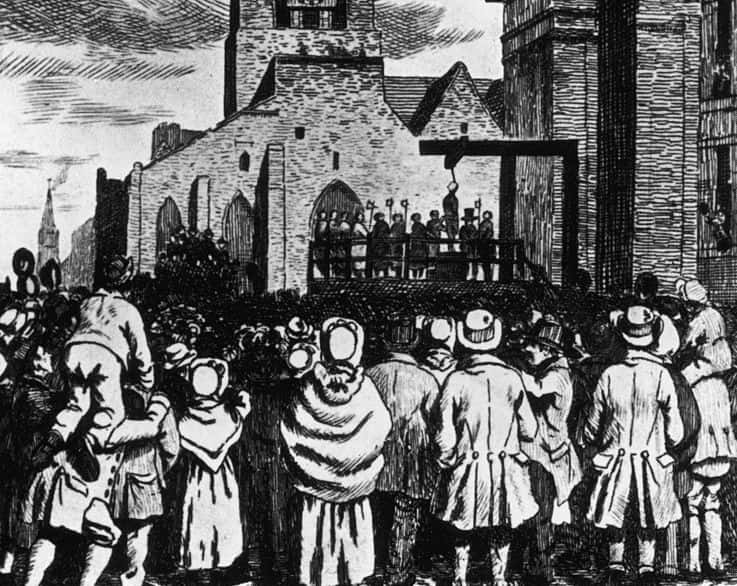 Getty Images Crowds gather to watch the execution of Scottish serial killer William Burke (1792 - 1829) at the Lawnmarket Edinburgh, 28th January 1829. Burke, with his accomplice William Hare, murdered nine people, selling the bodies to medical schools for dissection.
Getty Images Crowds gather to watch the execution of Scottish serial killer William Burke (1792 - 1829) at the Lawnmarket Edinburgh, 28th January 1829. Burke, with his accomplice William Hare, murdered nine people, selling the bodies to medical schools for dissection.
And that is exactly what happened. After his hanging, William Burke went back to Edinburgh Medical School one last time. It would have been a little too on the nose to have Robert Knox perform the dissection, so Professor Alexander Monro got the nod.
The school's scientists obviously saw no connection between their tenacity and Burke's misconduct. They took to studying his remains with what almost seems like glee. While performing the procedure, Monro dipped a quill into Burke’s blood, writing, "This is written with the blood of Wm Burke, who was hanged at Edinburgh. This blood was taken from his head." Once the show was over, a section of his skin was used to bind a book.
In the name of "science," we can only assume.
Don't Forget
Burke's skeleton was, of course, put on display at the school, where it remains today. A few years later, the British Government passed the Anatomy Act, finally loosening the restrictions on human dissections. The Burke and Hare murders, which unsurprisingly became a public sensation, played a large role in the Act’s passing.
The madness of grave robbing, body snatching, and murder had finally come to an end. The study of anatomy leapt forward, with Edinburgh still at the forefront of progress. But in case anyone tried to forget about the grisly past, William Burke’s bones still sat proudly on display, grinning at the role he played in it all.

